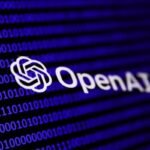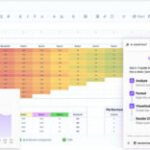Nvidia took San Jose with storm this year, with a record-25,000 participants flocking to the San Jose Convention Center and the Center area. Many workshops, discussions and panels were packed so that people had to lean against walls or sit on the floor – and the wrath of the organizers screaming commands to get them right.
Nvidia is currently sitting at the top of the AI world, with record-financial states, air-high profit margins and no serious competitors yet. But the coming months also pose an unprecedented risk to the business as it faces our rates, Deepseek and the shift of priorities of top AI customers.
On GTC 2025, Nvidia CEO Jensen Huang tried to project confidence, powerful new chips, personal ‘supercomputers’, and of course reveal really cute robots. It was an extensive point of sale – one aimed at dropping investors from Nvidia’s nose.
“The more you buy, the more you save,” Huang said at one point on Tuesday. “It’s even better than that. The more you buy, the more you make. ‘
Inference boom
More than anything, Nvidia at the GTC of this year tried to watch the participants – and the rest of the world – that demand for his chips will not delay soon.
During his chapter, Huang claims that almost the ‘whole world made it wrong’ on traditional AI scale that falls out of fashion. The Chinese AI laboratory Deepseek, which released a highly efficient “reasoning” model called R1 earlier this year, has urged the fear of investors that Nvidia’s sample chips may no longer be needed to train competitive AI.
But Huang has repeatedly insisted that power -hungry reasoning models will in fact drive more demand for the company’s chips, no less. Therefore, Huang displayed Nvidia’s next line of Vera Rubin GPUs, claiming that they will perform inferences (ie AI models) at about double the rate of the current best Blackwell chip of NVIDIA.
The threat to Nvidia’s business that Huang spent less time was very good such as Cerebras, Groq and other low-cost deduction hardware and cloud suppliers. Almost every hyperscaler also develops a custom slide for distraction, if not training. AWS has Graviton and Inferentia (which is reportedly aggressively discounted), Google has TPUs, and Microsoft has Cobalt 100.

Along the same vein, technical giants are currently very dependent on Nvidia chips, including Openai and Meta, in search of tires through internal hardware efforts. If they – and the above other competitors – are successful, it will almost surely weaken the strangled and the AI disc market.
This is perhaps the reason why Nvidia’s share price fell about 4% after Huang’s starring role. Investors may have been hoping for “one last thing” – or perhaps an accelerated launch window. Eventually, they didn’t get either.
Tariff tension
Nvidia also tried to quell concerns about rates on GTC 2025.
The US has not imposed any rates on Taiwan (where Nvidia gets most of its chips), and Huang claims that rates would not do ‘significant damage’ in the short term. However, he ceased to promise that Nvidia would be protected from the long-term economic consequences, regardless of the form they eventually took.
Nvidia clearly received the Trump administration’s “America First” message with Huang promise at gtc To spend hundreds of billions of dollars on manufacturing in the US, while it will help the company diversify its supply chains, it is also a huge cost for NVIDIA, whose valuation of multitrillion dollars depends on healthy profit margins.
New business
As it seems to the seed and cultivation of businesses other than its core diskline, Nvidia at GTC has drawn attention to its new investments in Quantum, an industry that has historically neglected the company. On the first quantum day of GTC, Huang apologized to CEOs of major quantum companies for causing a minor equity accident in January 2025 after suggesting that the technique for the next 15 to 30 years would not be very useful.

Tuesday, nvidia announced That it would open a new center in Boston, NVAQC, to promote quantum computer science in collaboration with ‘leading’ hardware and software markers. The center will, of course, be equipped with Nvidia chips, which, according to the company, will enable researchers to simulate quantum systems and the models needed for quantum error correction.
In the more immediate future, Nvidia, which he calls ‘personal AI super computers’ as a potential new income maker.
At GTC, the company introduced DGX Spark (formerly called Project Digits) and DGX station, both designed to enable users to prototype and manage AI models in a variety of sizes on the Rand. It is also not exactly cheap – they sell thousands of dollars – but Huang boldly stated that they represented the future of the personal computer.
“This is the computer of the Age of Ai,” Huang said during his speech. “That’s what computers should look like, and that’s how computers will work in the future.”
We will see if customers agree.
(tagstotranslate) gtc
+++++++++++++++++++
TechNewsUpdates
beewire.org










